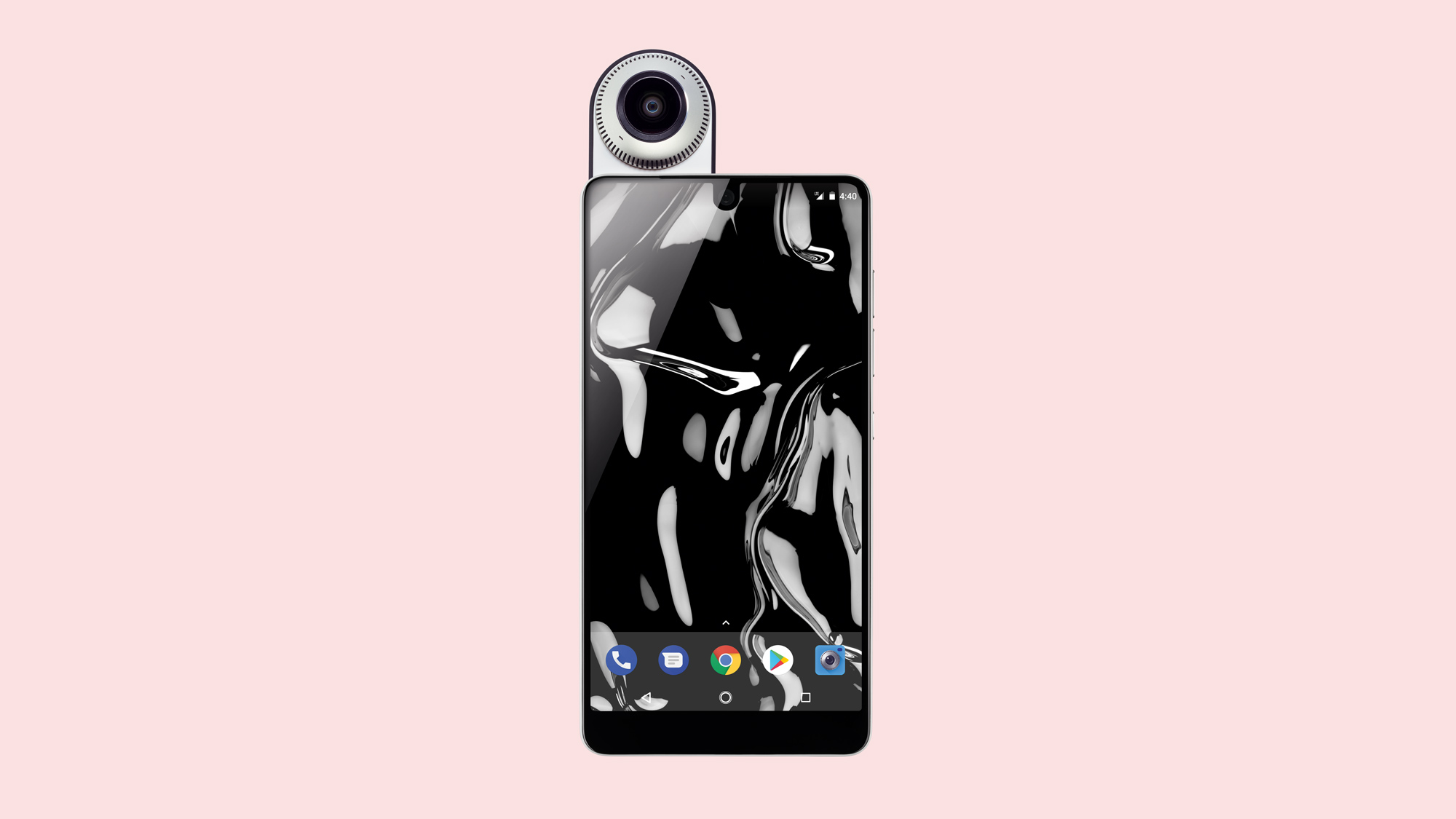The Creator of Android Made a $699 Phone That’s Beautiful but Not Essential

Walking into Android creator Andy Rubin’s startup incubator and venture fund, Playground Global, feels like stepping into an episode of HBO’s Silicon Valley.
Set behind the aging, Western-themed electronics retailer Fry’s Electronics in Palo Alto, California, Playground’s sprawling, warehouse-like space is replete with hip designer furniture and objects, like iconic Eames lounge chairs and Heath ceramic vases.
It’s here that Rubin—who looks kind of like Steve Jobs, with his thin-rimmed glasses, stubbly beard, close-cropped hair, dark T-shirt, and jeans—gathered a small group of reporters early this week. The reason? To get to know his latest creation, a $699 unlocked smartphone that is immodestly and ambitiously called the Essential Phone.
Rubin was excited, holding up the phone and explaining how the company behind it, also called Essential, approached building it differently than a big, faceless phone maker would.
While many smartphones are odes to metal and glass, this phone has a titanium body and a ceramic back (the idea being that this combo, besides looking good, will hold up to inevitable drops). It’s also got two little magnetic connectors on the back to snap accessories on and off, so you can add more features over time, such as a 360-degree camera that the company is selling alongside the phone. It has no branding, so you don’t feel like a billboard when you use it, and software and security updates will happen regularly, Rubin says.
“We’re not going to do anything that’s anti-consumer,” he says.
For now, that’s impossible to judge; the handset only went on sale on Thursday.
It is true, though, that the Essential Phone is beautiful, and only truly appreciated in person: a gorgeous display stretches across its face, while the rest of it is shiny, silvery black with matte black accents. The lack of branding makes it a little mysterious.
It runs Android, and has a number of popular Google apps like Gmail and Google Maps, but it’s not filled with lots of apps that you may or may not want—instead, you can just download what you like.
And the Essential Phone works wonderfully. There are two cameras on the rear—a 13-megapixel combined color and mono camera, which both can be used to take beautiful shots and also take 4K video (such high-definition video has become, uh, essential, for top-of-the-line smartphones). On the front, a distracting third camera makes a little cut in the top of the display, but it, too, is well-appointed, taking crisp selfies (eight megapixels) and shooting videos in 4K.
One of the biggest disappointments to me was that I couldn’t test one of the most intriguing features of the phone: its ability to connect and power accessories, like the aforementioned 360-degree camera, which seems like a very cool way to change out the capabilities of your phone (and an amazing opportunity to continue selling products to customers after they’ve bought the phone itself).
From the looks of some demo shots that Essential’s team showed off, this camera in particular may be a lot better than the other low-end consumer cameras of this sort. There are a handful of them on the market now, and if virtual reality and other such immersive digital experiences continue to grow, it’s not impossible to think this kind of accessory will be commonplace for smartphones in the coming years.
Watching videos on the Essential Phone is a lot of fun, as its display is fantastic and bright. I was surprised that its built-in speaker—which I usually eschew for earbuds—worked well even at top volume during roaring dragon-filled scenes of Game of Thrones, which I streamed over Sprint’s wireless network (Sprint is the company’s sole U.S. wireless partner for now).
The Essential Phone is, generally, easy to use and swift. It feels good in your hands (though it’s definitely heavier than most other smartphones). It’s luxury personified but somehow understated.
Calling it “essential,” however, is a fallacy. It’s not something you need to have; it might not even be something you want to have. There are plenty of other impressive smartphones on the market—and, as always, more coming soon, both from Android handset makers and Apple—that will suit you just as well if you are interested in a high-end unlocked phone. And if, like many people, you don’t have $700 to spend on a smartphone, there are also many capable options that cost a lot less.
Gorgeous? Definitely. Essential? Here, in the heart of the actual Silicon Valley, perhaps. But for most of us, not so much.
Keep Reading
Most Popular
Large language models can do jaw-dropping things. But nobody knows exactly why.
And that's a problem. Figuring it out is one of the biggest scientific puzzles of our time and a crucial step towards controlling more powerful future models.
The problem with plug-in hybrids? Their drivers.
Plug-in hybrids are often sold as a transition to EVs, but new data from Europe shows we’re still underestimating the emissions they produce.
How scientists traced a mysterious covid case back to six toilets
When wastewater surveillance turns into a hunt for a single infected individual, the ethics get tricky.
Google DeepMind’s new generative model makes Super Mario–like games from scratch
Genie learns how to control games by watching hours and hours of video. It could help train next-gen robots too.
Stay connected
Get the latest updates from
MIT Technology Review
Discover special offers, top stories, upcoming events, and more.